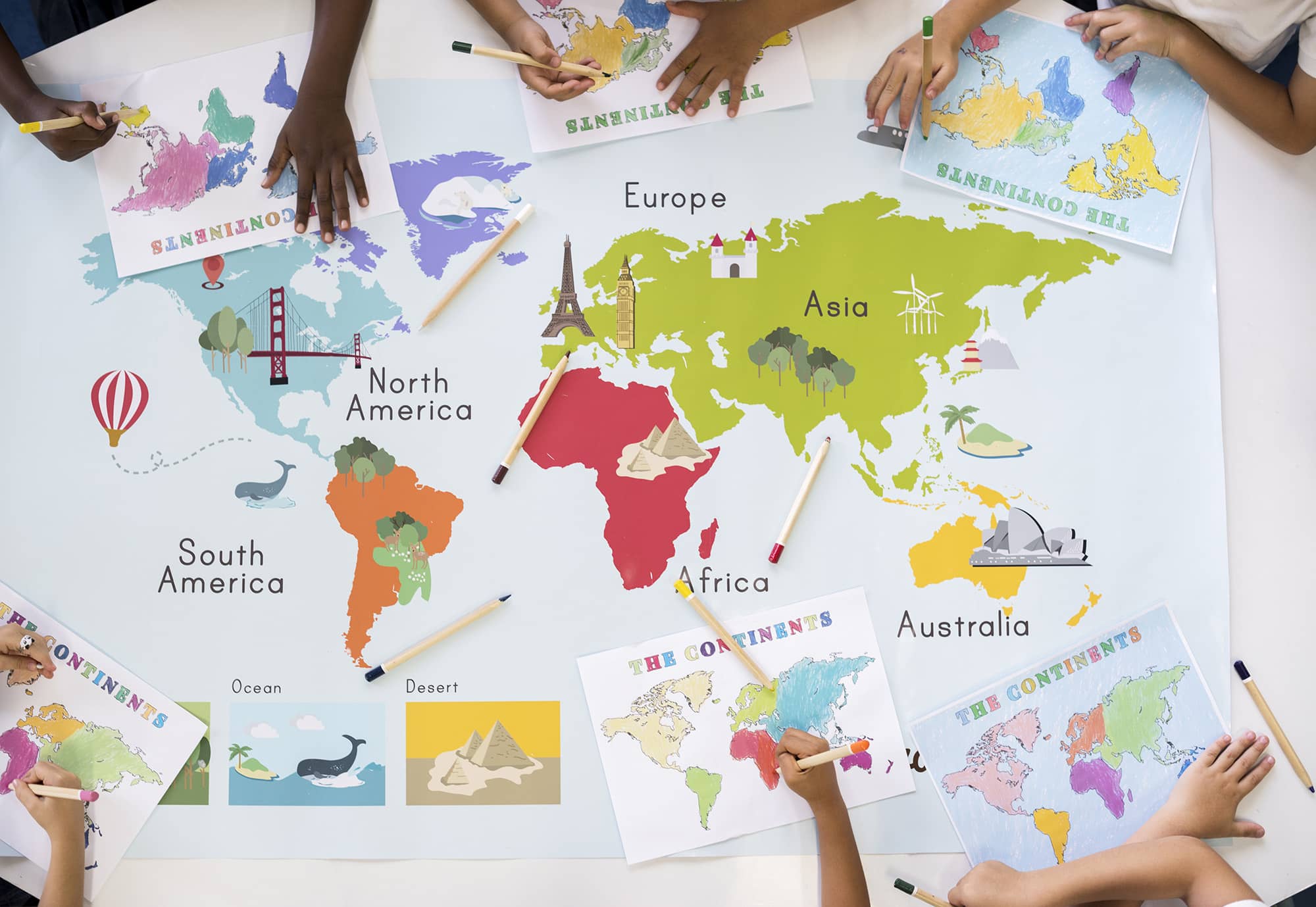Prepa Tec: Bringing Multicultural Education to the Classroom
“At Prepa Tec, a multicultural teacher teaches his subject by linking the content with some aspect of cultural diversity, whether local, national or international.”

A globalized world like ours requires citizens with a respectful vision of multicultural diversity, informed and empathetic people, willing to get involved in searching for solutions, professionally competent, and simultaneously sensitive to cultural diversity. Therefore, multicultural teachers are challenged to have the appropriate tools to achieve the objectives of multicultural education. Notably, in Prepa Tec, a multicultural teacher links the contents of the subject they instruct to local, national, or international aspects of cultural diversity.
The Tony Blair Institute's Generation Global is an educational program created for students ages 13 to 17; its mission is to support the development of global citizens through videoconferences, dialogues, and tutorials. Providing teachers with reliable quality resources for training, class materials, and pedagogical assistance, among others (Generation Global, 2021).
“When participating live in the international videoconferences, Reflection and Global Communication were the skills that the students consider to have developed to a greater degree. On the other hand, when participating in the offline dialogues, they consider that Reflection and Critical Thinking were the most practiced skills.”
Since 2017, I have been teaching with a multicultural approach, having accredited several courses, training units, and certifications. In the past, I had heard about the Generation Global platform, but I never participated; for various reasons, I decided not to do it. However, in 2021, I set the goal to familiarize myself with the platform and integrate it into my classes. Below, I share my experience, the student's experiences, and some recommendations to guide teachers who want to learn this program and bring its resources to their multicultural classes.
Recommendations for integrating the Generation Global platform in the classroom.
My first recommendation is to plan the implementation and anticipate unforeseen events. I registered on the Generation Global website in June 2021. Thus, I gave myself time to know the platform, review the tools, see how to register students, look over available materials, and above all, consult the calendar of videoconferences to occur in the months August-December.
The discussion topics available offline and in videoconferences are very varied, relevant, and attractive to adolescents. The conversations in offline chats are safe because every participant's comment is reviewed by Generation Global staff before being posted or made visible. It is crucial to mention that, for privacy reasons, teachers cannot read the students' offline dialogues.
The platform uses gamification elements. Every participant activity or dialog gives students points that reflect their mastery in levels with names like Amoeba, Goldfish, Bullfrog, etc. Notably, a videoconference will not occur unless at least one other group joins; the students' time differences can complicate the available schedules. Booking video conferences in advance will allow students to participate and prepare for the selected topic; thus, they will perform better.
The second recommendation is to train the students. Before participating in a videoconference, the students should prepare by responding to the exercises in the selected topic (available on the platform). This preparation will allow them greater contextual fluidity in the conversation. Additionally, if possible, provide them with additional sources of information and conduct a mini-discussion in class as training. Finally, ask them to participate in several offline dialogues, which will allow them to develop desirable skills for a quality videoconferencing dialogue, where they use critical thinking, active listening, reflection, and questioning.
Considerations for platform usability
-
Students must take the introductory topic called Learning Dojo; otherwise, they will not know how to perform any other activity.
-
The teacher does not have a "student view," which causes difficulties when students ask where to find the various resources and required activities in their interface.
-
When students participate in offline dialogues, they may receive responses to their comments and theoretically continue the conversation. Still, in the case of my students, we never knew how to follow and continue the conversation threads.
Programming of multicultural videoconferences and apprenticeships
Let us review a little about multicultural video conferencing. In my case, I selected the topic Fake News and Social Media because I linked it with the topics that would appear on the students' last partial (exam). In the first-semester multicultural program, 39 students in two classes taking the subject "Creativity and Digital Design" participated. This activity also included students from two other schools, one in India and one in Indonesia, with almost 60 participants.

The Generation Global staff moderates the videoconference. The teachers are only spectators. The conversation lasts 60 minutes; they ask participants to connect 30 minutes before the scheduled time.
What I learned in this first videoconference:
-
A smaller number of students would have allowed better participation by all present with a more balanced dialogue. (There were 39 participants from Mexico, ten from India, and nine from Indonesia.) Bringing my two classes into the same video conference was not the best decision.
-
A few days after the videoconference, the Generation Global team provided valuable feedback on what was experienced in the activity. It is very educational to review this information and recommendations with the students.
-
After participating in a videoconference, students must answer a survey about what they learned in the activity before registering for a new one. This survey became problematic to several of my students, who answered it entirely, but it was not detected by the program, so the survey kept reappearing. We requested support from the platform's support team but delayed the solution.
The platform allows the teacher to see each student's performance; the teacher can also download a report in Excel. Here are some results at the end of the semester:
-
The 39 students in my classes achieved an average of 280 points for activities carried out; a female student had the highest score (1192 points). It is worth mentioning that I specified the minimum tasks/activities to be done, but they were free to perform additional activities.
-
The report indicates that students participated more in offline dialogues with reflection-type messages; the responses to questions were the least.
-
On average, students completed 2.8 topics (the minimum requested was 3). One female student completed nine topics.
Students’ assessment for this activity
At the end of the semester, I asked the students to answer a series of questions that would allow me to measure their satisfaction with using the Generation Global platform and the work in the different activities. Here are the most relevant results:
-
When asked to select two topics that they would like to discuss in the next videoconference, the students voted most for a) Education, Climate Change, and b) The rights of girls and women.
-
The skill they considered to have developed the most when participating in the videoconference was Global Reflection and Communication. On the other hand, Reflection and Critical Thinking skills were perceived as the most developed during offline dialogues.
-
Twenty-eight (out of thirty-nine) students responded that they desired to participate in other videoconferences, while eleven said they were unsure.
-
64% of students indicated they wanted to continue using the platform; 30% were unsure.
-
There was an open question for students to indicate the purpose they would most like to use the platform. Among the responses, in general, they all mentioned "sharing and communicating with people from other cultures/countries."
-
When answering about what they did not like about the platform, they mentioned (among others), "it becomes tedious to answer topics" given that the format is always the same, "technical problems" of the platform, and too much participation in offline dialogues.
Reflection
From these results, I conclude that the students' experience was positive, and, above all, that it can still be improved. The platform's activities allowed the students to develop multicultural competencies, and the teacher resources are valuable supports.
A final observation I can make is that the activities of the Generation Global platform are ideal for asynchronous work, they do not require much time, but they do require reflection, individuality, and privacy.
Multicultural teacher, if you have not used the Generation Global platform, I invite you to give it a try next semester. You will not regret it, and your students will appreciate it, but above all, you will have one more resource to strengthen multicultural education in your classes.
